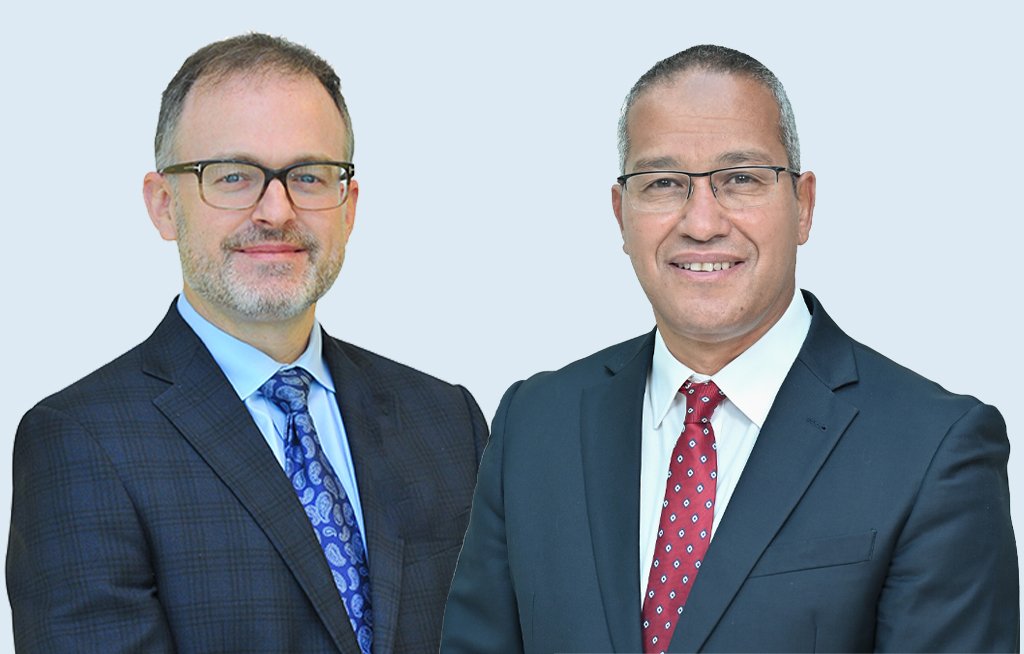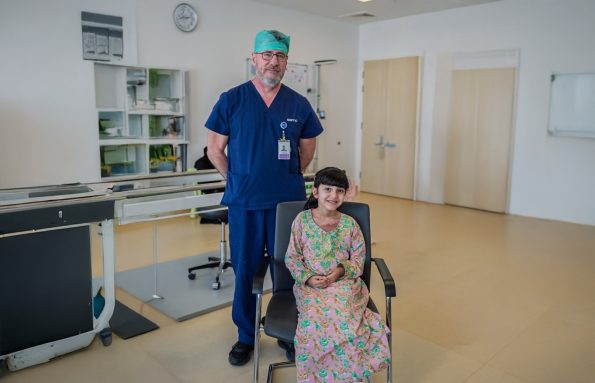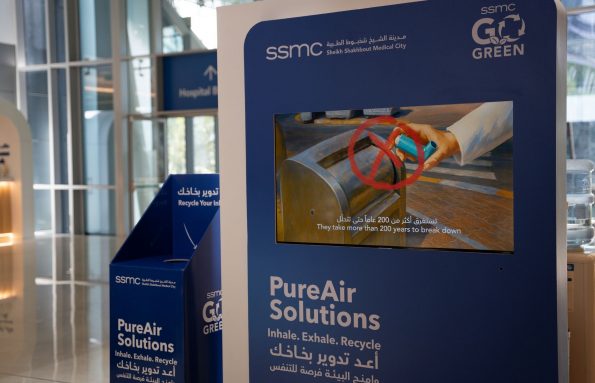- Anesthetic gases comprise of up to 5% of a hospital’s carbon footprint.
- Ɗesflurane – an inhaled anesthetic often used to induce anesthesia at the beginning of a surgical procedure – is considered a major greenhouse gas.
- Striving to minimize impact on the environment and in line with the DoH health care sustainability goals and the ‘Year of Sustainability’, SSMC discontinues the use of Ɗesflurane.
Sheikh Shakhbout Medical City (SSMC), one of the UAE’s largest hospitals for serious and complex care and a joint-venture partnership between Abu Dhabi Health Services Company (SEHA) and Mayo Clinic, has permanently discontinued use of the environmentally harmful anesthetic agent Ɗesflurane.
This initiative aligns with the Department of Health – Abu Dhabi’s health care sustainability goals announced earlier this year, representing a significant stride in SSMC’s dedication to sustainability by taking positive actions to reduce the adverse environmental impact of surgical procedures.
Ɗesflurane is a volatile inhalation anesthetic commonly used during surgical procedures. While it is an effective anesthetic agent, it damages the environment due to its contribution to greenhouse gas emissions. When released into the atmosphere, Ɗesflurane can trap heat and contribute to global warming and its associated environmental aftermaths.2
Dr. Monzer Hassan Sadek, Chair of the Department of Anesthesia, said: “Anesthesia is the specialty responsible for patient care before, during and after operations. During the operation, the type of anesthetic delivered can vary depending upon the clinician’s preference and suitability for the patient 3. Patients can undergo traditional general anesthesia using anesthetic gases or intravenous drugs to put them to sleep. Alternatively, patients can be awake but comfortable and safe for their operation using regional anesthetic techniques: epidural or spinal injections, or limb blocks.”
Anesthesia as a specialty contributes up to 5% of an acute hospital carbon footprint. The predominant source of this footprint is from anesthetic gases, used during traditional general anesthesia. The most harmful of these include Nitrous Oxide and Ɗesflurane.
Their Global Warming Potential (GWP) describes the harm produced by these gases on the environment. Its value describes the amount of heat trapped over a 100-year period within the atmosphere, compared with the similar mass of carbon dioxide (CO2), which has a GWP of one. Ɗesflurane is 2540 times more potent as a greenhouse gas than an equivalent mass of CO2. A 240 mL bottle of Ɗesflurane, completely vaporized will produce the equivalent of 886 kg of CO2. In everyday terms, this is the equivalent of driving 4943 kilometer in a petrol engine car.
Dr. Sadek added: “As part of our broader commitment to reducing our carbon footprint, we have discontinued using Ɗesflurane at SSMC. Not only is this a win for the environment, but research has shown that other inhaled anesthetics are just as effective and may even have a lower risk of respiratory complications, so it further improves patient safety as well.”
Dr. Matthew Gettman, Chief Medical Officer of SSMC, explained that environmental awareness is a guiding principle at SSMC. “As a major complex care hospital, we are very aware that our choices can have a significant impact on the environment, both locally and globally. We are committed to practicing sustainable procurement, which refers to the process of selecting goods and services in a way that minimizes negative environmental, social, and economic impacts while maximizing positive ones. Mitigating greenhouse gas emissions from inhaled anesthetics, like Ɗesflurane, is just one example of how we are taking a proactive approach to reducing our carbon footprint. We are proud to take this first step and hope to inspire more positive changes for health care sustainability in the UAE and beyond.”






